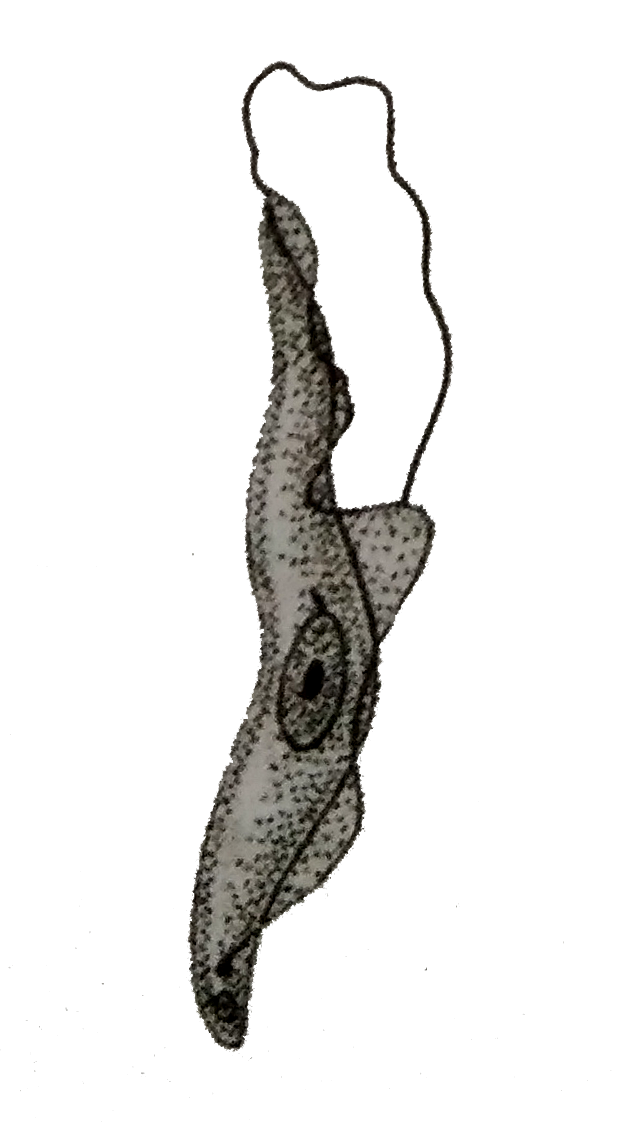Protozoan protists are differentiated on the basis of
Nuclei
Size
Shape
Locomotory structures.
The correct Answer is:D
Step-by-Step Solution:
1. Understanding Protozoan Protists: Protozoan protists are unicellular eukaryotic organisms that exhibit animal-like characteristics, particularly in their mode of nutrition and behavior. They are often considered primitive relatives of animals.
2. Classification Basis: Protozoan protists are classified into different groups based on specific characteristics. The primary criterion for differentiation among these groups is the type of locomotory organ they possess.
3. Identifying the Groups: There are four main groups of protozoan protists based on their locomotory organs:
- Amoeboid Protozoans: These organisms, such as Amoeba and Entamoeba, use pseudopodia (false feet) for movement.
- Ciliated Protozoans: This group includes organisms like Paramecium, which utilize cilia for locomotion.
- Sporozoans: These protozoans, such as Plasmodium, are non-motile and do not have any locomotory organs. They have a spore-like stage in their life cycle.
- Flagellated Protozoans: Organisms like Trypanosoma belong to this group and use flagella for movement.
4. Conclusion: The differentiation of protozoan protists is primarily based on their locomotory organs, which can be pseudopodia, cilia, or flagella, or the absence of locomotory organs in the case of sporozoans.
5. Final Answer: Therefore, protozoan protists are differentiated on the basis of their locomotory organs.
---
- Amoeboid Protozoans: These organisms, such as Amoeba and Entamoeba, use pseudopodia (false feet) for movement.
- Ciliated Protozoans: This group includes organisms like Paramecium, which utilize cilia for locomotion.
- Sporozoans: These protozoans, such as Plasmodium, are non-motile and do not have any locomotory organs. They have a spore-like stage in their life cycle.
- Flagellated Protozoans: Organisms like Trypanosoma belong to this group and use flagella for movement.
Topper's Solved these Questions
- KINGDOM PROTISTA (UNICELLULAR EUKARYOTES)BOOK - DINESH PUBLICATION ENGLISHCHAPTER - KINGDOM PROTISTA (UNICELLULAR EUKARYOTES)EXERCISE - CHECK YOUR GRASP
19 Videos
- KINGDOM PROTISTA (UNICELLULAR EUKARYOTES)BOOK - DINESH PUBLICATION ENGLISHCHAPTER - KINGDOM PROTISTA (UNICELLULAR EUKARYOTES)EXERCISE - CHECK YOUR GRASP
19 Videos
- KINGDOM PLANTAE OR METAPHYTA BOOK - DINESH PUBLICATION ENGLISHCHAPTER - KINGDOM PLANTAE OR METAPHYTA EXERCISE - CYG
20 Videos
- LEAFBOOK - DINESH PUBLICATION ENGLISHCHAPTER - LEAFEXERCISE - CYG
10 Videos
Similar Questions
Knowledge Check
Identify the given figure of a protozoan protist and select the correct option.
 Aentamoeba histolyticaBPlasmodium vivaxCGiardia intestinalisDTrypanosoma gambiense
Aentamoeba histolyticaBPlasmodium vivaxCGiardia intestinalisDTrypanosoma gambiense
In mosquitoes, the sex differentiation can be done on the basis of
View SolutionProtozoans are actually
View SolutionDecomposer protist are
View SolutionDecomposer protist are
View SolutionGolden Brown Protists are
View SolutionAll protists are unicellular.
View SolutionNutrition in protists is
View Solution
